Sauerkraut Fermentation Storage
Briefly discuss the importance of fermenting sauerkraut
Fermenting sauerkraut not only enhances its flavors but also provides a range of health benefits, including gut-friendly probiotics and improved nutrient bioavailability. This ancient preservation technique extends the shelf life of cabbage, making it a go-to choice for many enthusiasts.
Delving into fermentation history, we discover that the art of fermenting sauerkraut dates back centuries, with its roots deeply entrenched in traditional culinary practices across various cultures. This historic method of food preservation has been passed down through generations, continually refined to produce the tangy, nutritious sauerkraut we relish today. Understanding this rich history can add a layer of appreciation to our modern fermentation endeavors and inspire the continuation of this timeless craft.
Introduce the topic of where to store sauerkraut while fermenting

Finding the perfect spot to store sauerkraut during fermentation is crucial for achieving a successful and tasty end product. This article is all about guiding you on where to store sauerkraut for fermenting, ensuring that your homemade sauerkraut turns out top-notch!
Highlight the benefits of using BurpLids® for fermenting sauerkraut
Using BurpLids® for fermenting sauerkraut can simplify the process and result in a faster, more efficient cure. With features like vacuum-sealed lids and compatibility with wide mouth mason jars, BurpLids® offer a convenient and reliable solution for making sauerkraut at home.
Containers for Fermenting
Fermenting sauerkraut requires the right kind of containers to ensure a successful fermentation process. Glass or food-grade plastic containers are ideal, as they don't react with the acidic nature of sauerkraut. One popular choice among fermenting enthusiasts is wide mouth mason jars. These jars are not only easy to find, but they also provide a convenient and efficient way to store and ferment sauerkraut.
Wide mouth mason jars have a few advantages that make them an excellent choice for fermenting sauerkraut. Firstly, their wide opening allows for easy packing and removal of the sauerkraut. This feature makes it easier to monitor the fermentation process and adjust the ingredients if needed. Secondly, mason jars are available in various sizes, providing flexibility in terms of batch size and storage requirements. Lastly, mason jars are easy to clean and reusable, making them an eco-friendly and cost-effective option.
The compatibility of BurpLids® with wide mouth mason jar s takes fermenting sauerkraut to a whole new level. BurpLids® are designed to fit all wide mouth mason jar containers, offering an airtight seal to keep the fermentation process on track. This innovative product not only ensures a successful fermentation but also eliminates the need for daily burping of mason jar lids. So, when it comes to fermenting sauerkraut, choosing wide mouth mason jars and BurpLids® can help achieve maximum potency and flavor in every batch.
The Fermentation Process
Fermenting sauerkraut is a simple process that relies on lactic acid bacteria to transform raw cabbage into a tangy, flavorful treat. By understanding the basics of sauerkraut fermentation, it's easier to appreciate the importance of proper storage conditions and the role BurpLids® can play in promoting a successful cure.
Brief overview of sauerkraut fermentation
Sauerkraut fermentation starts with shredding fresh cabbage and mixing it with salt. The salt helps draw out moisture from the cabbage, creating a brine that allows lactic acid bacteria to thrive. These beneficial bacteria consume the sugars in the cabbage, producing lactic acid and carbon dioxide. The lactic acid gives sauerkraut its characteristic tangy flavor and acts as a natural preservative, while the carbon dioxide creates an anaerobic environment that helps ward off harmful microbes.
Importance of proper storage conditions during fermentation
During fermentation, it's essential to maintain proper storage conditions to ensure a successful and tasty sauerkraut. The ideal environment for fermenting sauerkraut includes a consistent temperature, which should be between 65°F and 72°F, and an anaerobic environment free from oxygen. Exposure to air can introduce unwanted bacteria and mold, leading to spoilage. Additionally, keeping the cabbage submerged in the brine is crucial for preventing contamination.
Role of BurpLids® in promoting a successful cure
BurpLids® can make the process of fermenting sauerkraut even more straightforward and worry-free. With their vacuum-sealed lids, BurpLids® help maintain the anaerobic environment required for successful fermentation, while also eliminating the need for daily burping of mason jar lids. By using BurpLids® for sauerkraut fermentation, enthusiasts can enjoy a more efficient and hassle-free experience, resulting in a tasty and potent final product.
Storing Fermenting Sauerkraut: Location and Temperature
When it comes to fermenting sauerkraut, finding the ideal location and maintaining the right temperature are crucial. In this section, let's explore some tips on how to achieve these conditions without breaking a sweat.
Choosing the Ideal Location for Storing Sauerkraut During Fermentation
First and foremost, select a spot that is away from direct sunlight. Excessive light can negatively impact the fermentation process and even encourage the growth of unwanted microorganisms. Look for a cool, dark place, such as a pantry, cupboard, or basement. Keep in mind that the area should also have good air circulation and be free of strong odors, as these can affect the flavor of the fermenting sauerkraut.
The Importance of Maintaining a Consistent Temperature
Temperature plays a vital role in the fermentation process. The ideal temperature range for fermenting sauerkraut is between 65°F and 75°F (18°C and 24°C). Maintaining a consistent temperature within this range ensures that the beneficial bacteria have the perfect environment to thrive and do their job. Fluctuations in temperature can slow down or speed up fermentation, which might lead to an inconsistent final product. In some cases, improper temperature control can even result in spoilage.
Tips for Regulating Temperature During Fermentation
Here are some practical tips to help maintain the optimal temperature while fermenting sauerkraut:
- Use a thermometer to monitor the temperature of the storage area regularly.
- If the temperature gets too high, consider moving the fermenting sauerkraut to a cooler location, such as a basement or a different part of the house.
- If the temperature is too low, try wrapping the fermentation container in a blanket or towel to insulate it and maintain a more consistent temperature.
- Avoid placing the fermenting sauerkraut near heat sources, like radiators or heating vents, as these can cause temperature fluctuations.
- Remember that patience is key during the fermentation process, and it's better to allow the sauerkraut to ferment at a slower pace within the ideal temperature range than to rush it in an unsuitable environment.
In conclusion, taking the time to find the perfect location and keeping a close eye on temperature can significantly impact the success of fermenting sauerkraut. With the right conditions and a little patience, you'll be enjoying delicious, homemade sauerkraut in no time!
BurpLids® Advantages for Sauerkraut Fermentation
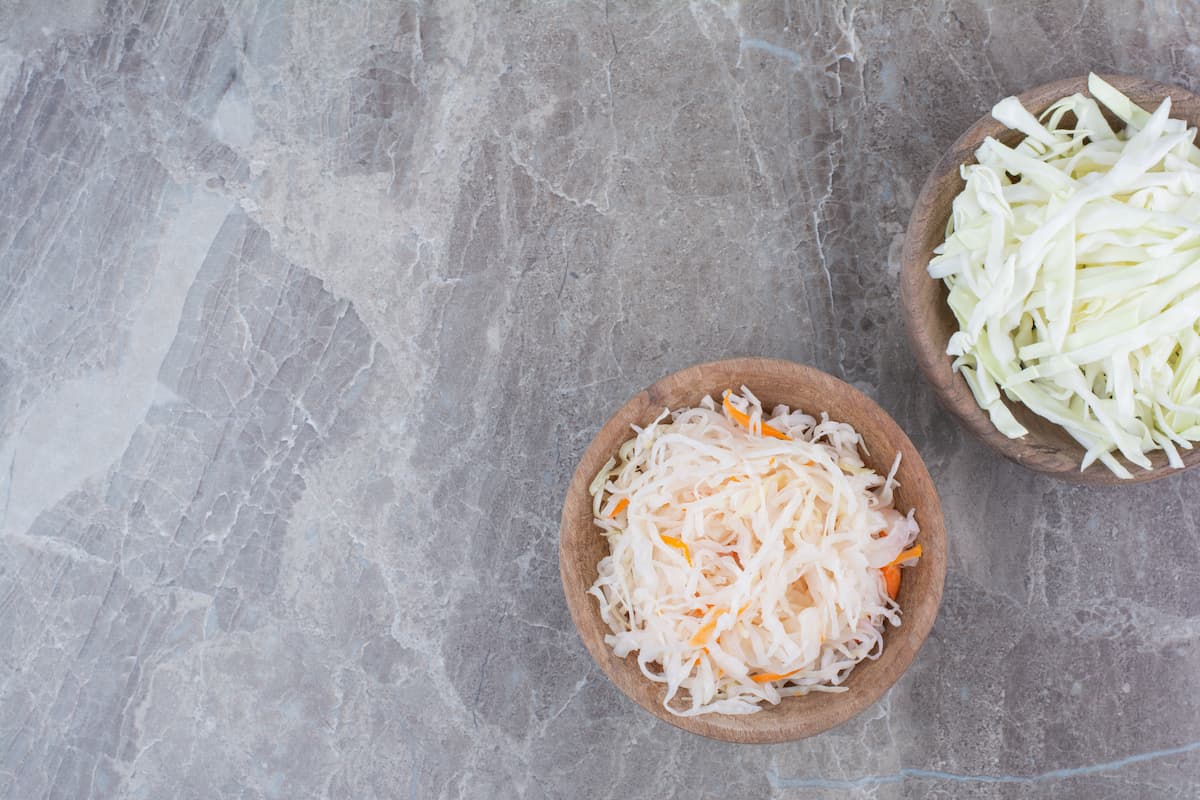
When it comes to fermenting sauerkraut, BurpLids® offers a number of advantages that can make the process easier, more efficient, and less time-consuming. Let's explore how these innovative lids can help improve the fermentation experience.
No More Daily Burping
One of the most significant benefits of using BurpLids® is that they eliminate the need for daily burping of mason jar lids. This can save time and reduce the risk of contamination, as there's no need to repeatedly open and close the jars during fermentation. The clever design of BurpLids® allows carbon dioxide to escape while preventing oxygen and contaminants from entering the jar, ensuring a healthy and successful fermentation process.
Vacuum-Sealed Lids for Optimal Fermentation
Vacuum-sealed lids are another great feature of BurpLids®. These lids create an airtight seal on wide mouth mason jars, which is crucial for successful sauerkraut fermentation. By maintaining an anaerobic environment, vacuum-sealed lids help to prevent the growth of unwanted mold and bacteria, ensuring that the sauerkraut ferments properly and retains its delicious flavor and potency.
The Convenience of a Fermentation Kit
For those new to fermenting sauerkraut or looking for an all-in-one solution, the BurpLids® fermentation kit is a game-changer. The kit includes everything needed to get started with fermenting, such as vacuum-sealed lids, an extraction pump for successful curing, and weights to keep the sauerkraut submerged during fermentation. By offering all these components in one convenient package, BurpLids® makes it easy to dive into the world of sauerkraut fermentation and enjoy the many benefits it has to offer.
Common Questions About Storing Sauerkraut for Fermentation
When it comes to storing sauerkraut during fermentation, many questions arise. In this section, we'll address some of the most frequently asked questions and provide practical solutions and tips for common storage concerns.
Frequently Asked Questions Related to Storing Sauerkraut During Fermentation
- How long does sauerkraut need to ferment? The fermentation process usually takes between two to four weeks, depending on the temperature and personal taste preferences. The longer it ferments, the tangier and more complex the flavor becomes.
- What is the ideal temperature for fermenting sauerkraut? A consistent temperature between 64°F to 75°F (18°C to 24°C) is best for fermenting sauerkraut. Temperatures above 75°F can cause the fermentation process to happen too quickly, leading to off-flavors, while temperatures below 64°F can slow down the process and increase the risk of spoilage.
- Should sauerkraut be exposed to light during fermentation? Keeping sauerkraut in a dark place or away from direct sunlight is recommended, as light exposure can affect the fermentation process and the quality of the final product.
Practical Solutions and Tips for Common Storage Concerns
- Controlling temperature: To maintain a consistent temperature, store the fermenting sauerkraut in a cupboard, pantry, or basement where temperature fluctuations are minimal. You can also use a temperature-controlled fermentation chamber or wrap the container with a towel to help insulate it.
- Preventing mold and unwanted bacteria: Ensure that all equipment is cleaned and sanitized before use. Keep the sauerkraut submerged under the brine during fermentation, and use an airlock system like BurpLids® to keep unwanted bacteria out while allowing carbon dioxide to escape.
- Checking the progress: It's a good idea to monitor the fermentation process by checking the sauerkraut regularly. Look for any signs of mold or an unpleasant smell, which could indicate a problem with the fermentation. However, remember that opening the container too often can introduce unwanted bacteria, so it's best to limit how frequently you check on the sauerkraut.
Additional Resources for Flavor Enhancement Through Fermentation
For those who want to dive deeper into the world of fermenting sauerkraut, BurpLids® has got your back. Our website is packed with informative articles that can help you enhance the flavor and potency of your sauerkraut batches. Exploring these resources can give you a better understanding of the fermentation process and inspire you to experiment with new techniques.
So, don't hesitate to visit the BurpLids® website for more tips and tricks on fermenting sauerkraut. By expanding your knowledge and skills, you'll soon become a fermentation expert, ready to impress your friends and family with your delicious, homemade sauerkraut.
Fermentation Finale
As we've learned, proper storage plays a crucial role in successful sauerkraut fermentation. Using BurpLids® for fermenting sauerkraut offers numerous advantages, such as faster and more efficient curing, vacuum-sealed lids, and compatibility with wide mouth mason jars. In addition, our website offers articles on flavor enhancement through fermentation, providing even more valuable information on fermenting sauerkraut. So, why wait? Explore the BurpLids® Catalog , check out the BurpLids® Instructions , and get in touch through the BurpLids® Contact Information to make your sauerkraut fermentation journey a flavorful success!
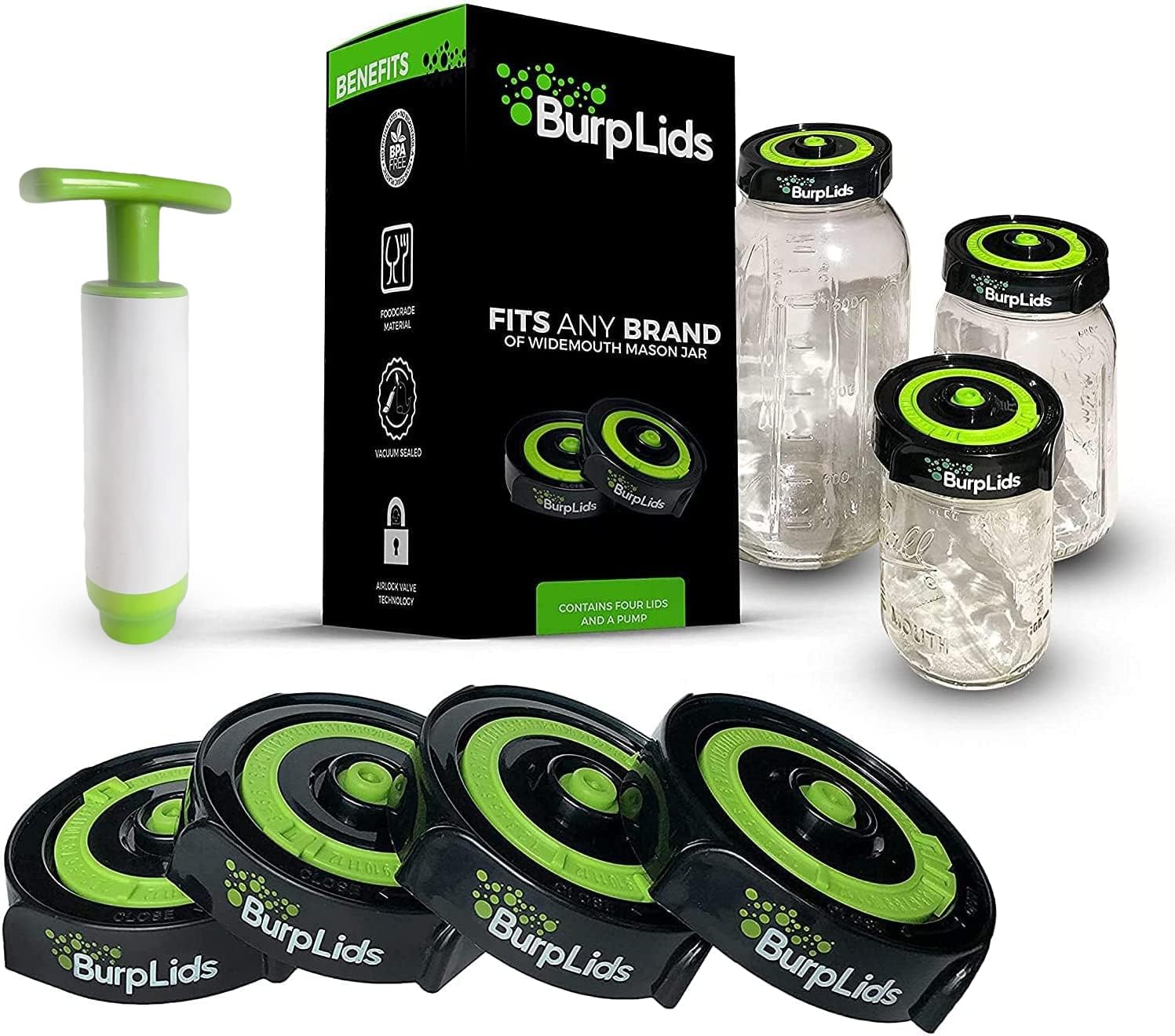 Plastic BurpLids® Curing Kit
Plastic BurpLids® Curing Kit
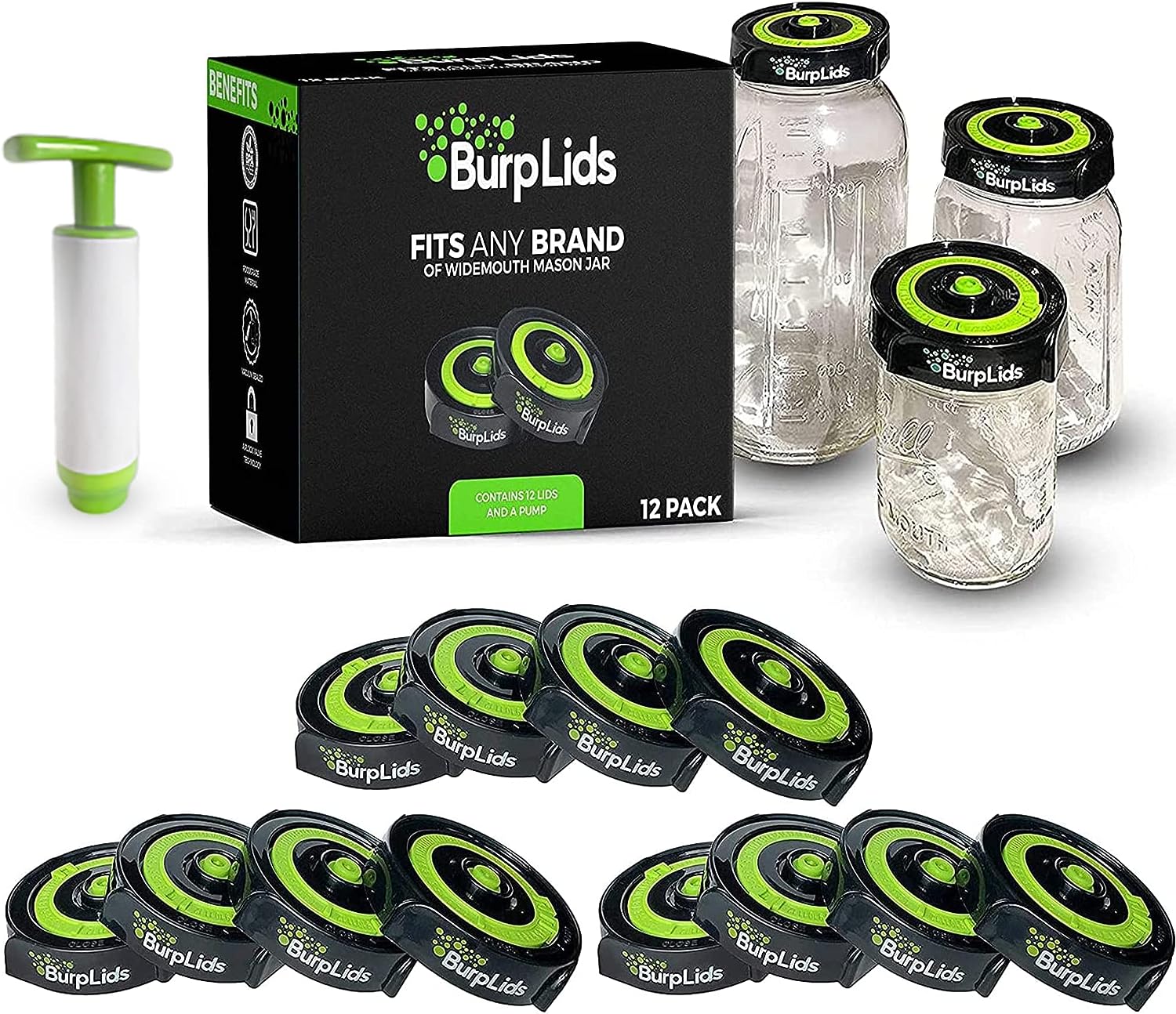 BurpLids® 12 Pack Curing Kit
BurpLids® 12 Pack Curing Kit
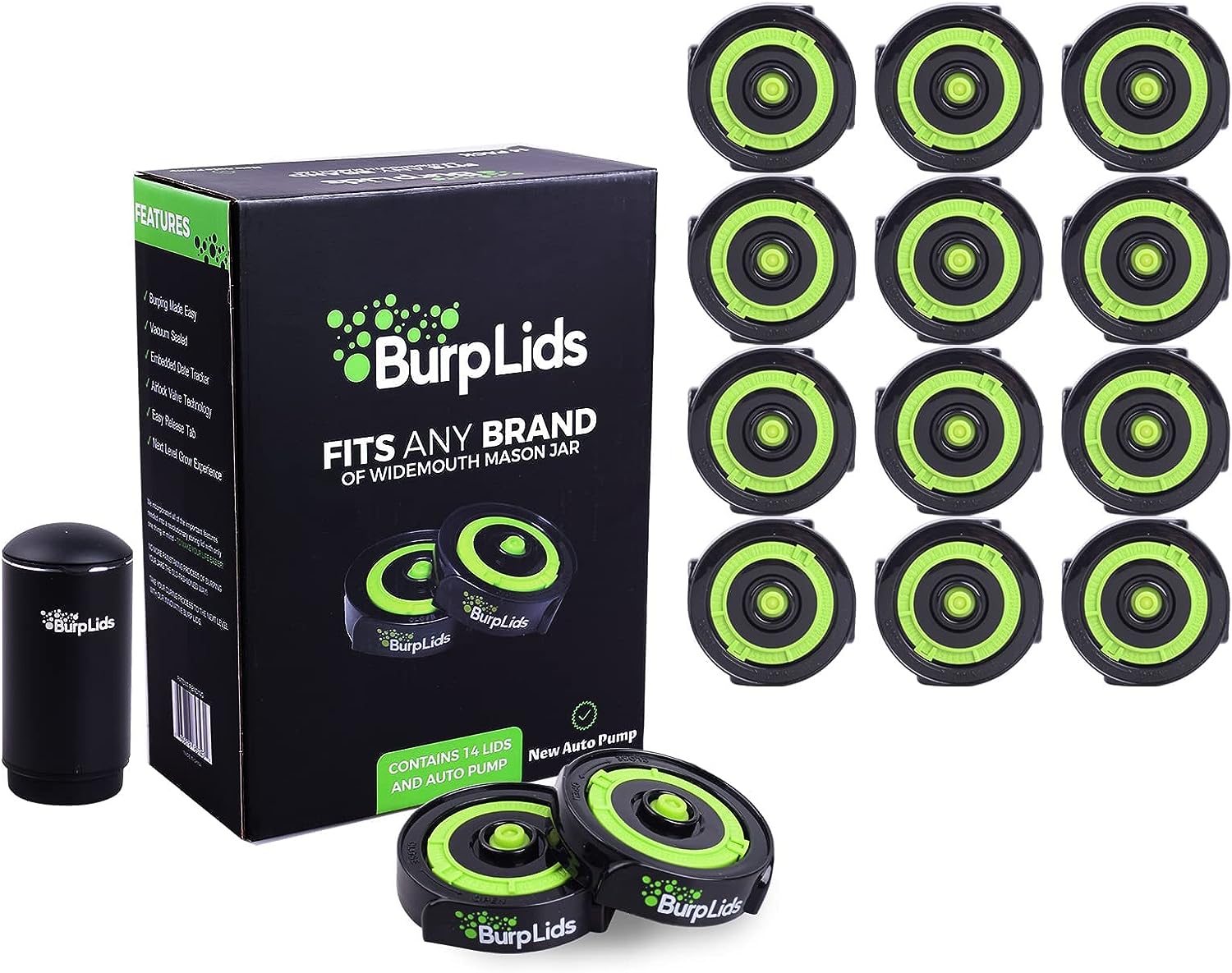 BurpLids® 14 Pack Curing Kit
BurpLids® 14 Pack Curing Kit
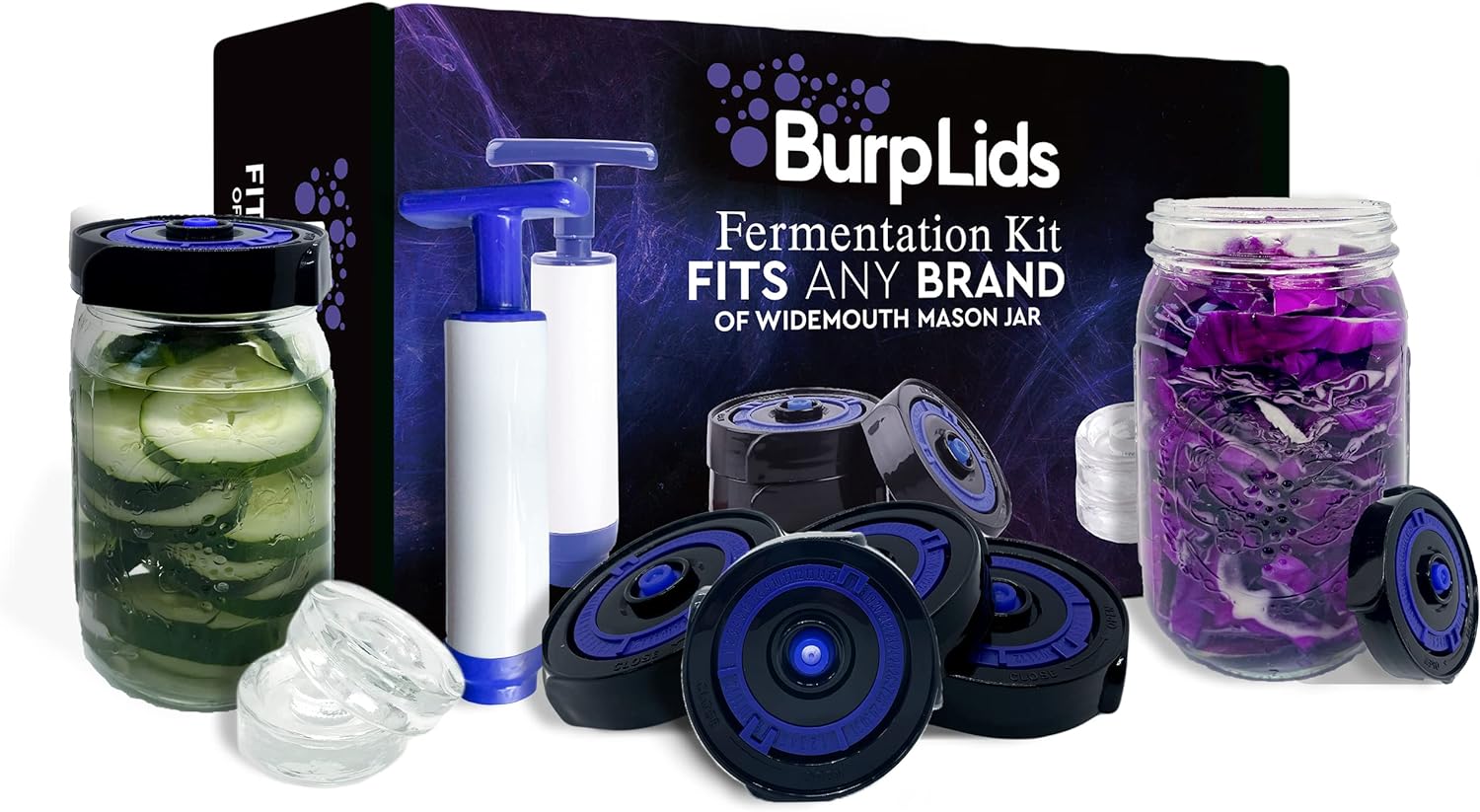 BurpLids® Pack Of 4 Fermentation Kit
BurpLids® Pack Of 4 Fermentation Kit





